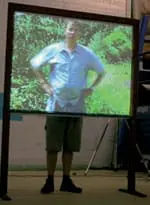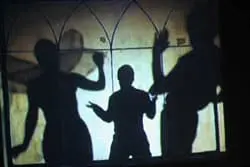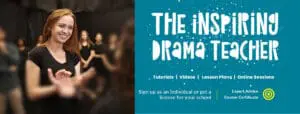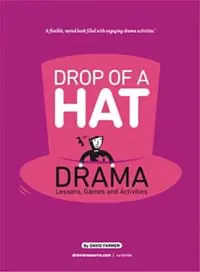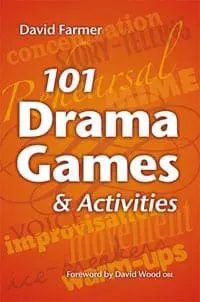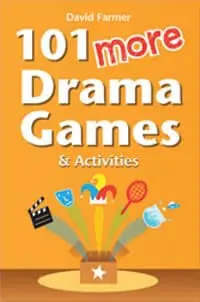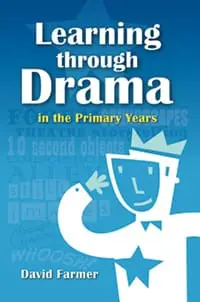Practical exercises exploring the Forkbeard approach
Through the Looking Glass
To explain Forkbeard’s extraordinary melding of film and live performance, it is useful to show students extracts of their work. A good selection can be found on their DVD The inComplete Works and at www.youtube.com/forkbeardfantasy. To prepare for the following activity you could also show the famous mirror scene (below) from Duck Soup (1933) by the Marx Brothers, where Harpo accidentally breaks a mirror and Groucho comes to investigate – dressed identically. This is a perfectly timed comic sequence with Harpo pretending to be the mirror image as Groucho attempts to catch his own reflection off guard.
In pairs, begin with the classic mirror exercise, where A leads the movements and B tries to reflect A’s movements as accurately as possible. Make sure the movements are slow and smooth. On a given signal, the leading swaps over. Try to keep the flow of movement each time there is a changeover. Once students are confident with this, they could start to explore the possibilities of crossing the divide. Each pair should devise a sequence based on the idea that the person looking into the mirror has some kind of relationship with their reflection. What could the relationship be? How can it be explored using the mirror game as a structure? How can they play with and break the rules of an image and its reflection?
- The exercise could be developed further using a recorded voice-over or back-projected video mirror image.
Storyboards
Storyboards are integral to the Forkbeard devising process. It is worth spending time exploring the use of these, even for planning simple interactions for the Mirror exercise and the following activities. They are ideal for structuring scenes and to give an opportunity for more visually-inclined students to contribute.
A development of the previous exercise is one that is used frequently by Forkbeard on their courses, involving video projection. For this you need a wooden frame made to the proportions of a video image – around 1.4m wide and 1.15m high on legs 0.9m high. The performers queue up to one side and are videoed as they step into the frame, which only shows the body from the waist up. Each person spends a couple of minutes inside, engaged in an activity which involves interaction with elements inside and outside the frame. This could be interacting with their own legs (which can be quite funny) or with objects passed in and out of the frame.
It is helpful to have a cue for entering the filmic dimension – for example coughing or putting your hand in and following it into the frame. One by one, each performer steps in, encouraging the next in the queue to come in before popping out the other side. Conversations can be held with people outside the frame. Once everybody has been inside, a white cloth is stretched across the frame. Performers queue up in the same order and the video is projected onto the framed screen. The performers step behind the screen and match themselves up with their film image so different parts of their body are on and off screen. Then they can begin to play with the dynamic between the filmic and live dimensions. It is important that the film and stage characters should be approximately the same size.
Some great examples of crossing the celluloid divide can be seen in the trailer for The Colour of Nonsense, particularly from 0.55 seconds onwards.
This activity uses a primitive cinematic form to explore the interaction between live and projected media, an approach which could easily be developed for live performance. The technique has been used successfully in Forkbeard’s collaborations with Geese Theatre Company, working with young offenders in prisons. A free-standing screen is lit from behind by a theatre lamp on the floor. A performer stands in front of or to the side of the screen in a down light while the lamp is used to cast shadows of other performers onto the screen. The screen shadow images can represent other characters or can be successfully used to explore the inner thoughts of the character out front. For example, actors playing the screen images could represent the Good and Evil sides of a character’s conscience as she makes a decision.
This article first appeared in Teaching Drama (Rhinegold Publishing Ltd). © David Farmer 2008.

